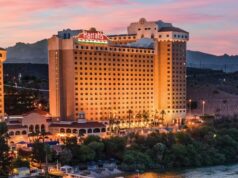
NATIONAL REPORT—When the U.S. Green Building Council (USGBC) announced revisions to its Leadership in Energy and Environmental Design (LEED) for Existing Buildings Rating System late last year, it was good news for hotel owners and operators. Now called LEED for Existing Buildings: Operations & Maintenance (O&M), the system is a better fit for hotels and is attracting the interest of many of the leading hotel companies. There are now approximately 200 hotel projects registered with USGBC. Most are seeking LEED for New Construction (LEED-NC) certification but the number of U.S. building owners pursuing LEED for Existing Buildings: O&M is expected to accelerate quickly.
Getting owners of existing hotel buildings to participate is important. According to USGBC, the existing building market is some 80 times larger than the new construction market and the potential for energy and water savings is huge. Making existing buildings smarter and more efficient will have a major impact on reducing greenhouse gas emissions.
Many in the lodging industry have been clamoring for a USGBC certification system just for hotels—something like “LEED for Hospitality.” According to Marc Heisterkamp, manager, LEED, Corporate & Investment Real Estate for USGBC, that probably will not happen.
“Our rating systems have all gone through changes,” Heisterkamp says. “As the building industry adapts to LEED, we will raise the bar. We are always working on making the necessary refinements to our existing certification systems. LEED for Existing Buildings: O&M is a better fit for the hotel industry. We probably will not brand it ‘LEED for Hospitality,’ but as we can make it a better program for the hospitality sector, we will.”
A Flexible Certification System
Heisterkamp says LEED for Existing Buildings: O&M fits not only hotels, but also office buildings and schools. It is flexible enough for diverse types of spaces.
“We have scaled the program to reach the entire built market,” Heisterkamp says. “We don’t expect every property to get certified. We are going after the top of the market. It is not about getting a green label on every building. It’s about using the program to help any property improve their environmental performance, regardless of where they are starting from.”
According to a recent report by the New Buildings Institute, LEED-certified buildings are delivering energy savings of 25 percent to 30 percent when compared to noncertified buildings. LEED for Existing Buildings: O&M certification is good for a maximum of five years.
“Building owners can recertify as often as every year,” Heisterkamp says. “The recertification covers all the time that has elapsed since the previous certification and they have to prove that they remained above the performance thresholds.”
USGBC does not do on-site inspections. Heisterkamp says the documentation required for certification is very thorough and actually tells USGBC much more than a site visit could, particularly since LEED is performance based. For example, you can visually see that a building is using energy efficient lighting, but you have to see data to ensure that it is an energy efficient building.

Performance Standards Defined
LEED for Existing Buildings: O&M performance standards address issues such as site maintenance, water conservation, indoor air quality, energy saving programs, recycling facilities and programs, purchasing practices, and green cleaning. The standards provide a road map for property managers and portfolio owners who wish to drive down operating costs while increasing occupants’ productivity.
To achieve LEED certification, buildings must meet all prerequisites in the Rating System and earn a minimum of 34 points. LEED for Existing Buildings: O&M ratings are awarded according to the following point thresholds: Certified, 34-42 points; Silver, 43-50 points; Gold, 51-67 points; and Platinum, 68-92 points.
Here a just a few examples of ways a building can achieve points:
• Employ an environmentally sensitive, low-impact building exterior and landscape management plan that helps preserve surrounding ecological integrity. (1 point)
• Reduce the number of commuting round trips made by regular building occupants. (1 to 4 points)
• To reduce light pollution, all non-emergency interior built-in lighting with a direct line of sight to any openings in the envelope (translucent or transparent, wall or ceiling) must be automatically controlled to turn off during all after-hours periods. (1 point)
• Have in place a permanently installed water meter that measures the total potable water use for the entire building and associated grounds. (1 point)
• For buildings eligible to receive an EPA rating using Energy Star’s Portfolio Manager tool, achieve an energy rating performance of at least 69. (2 to 15 points)
To review the entire LEED for Existing Buildings: O&M document, click here.
How LEED for Existing Buildings Has Been Improved
In what ways is the recently released LEED for Existing Buildings: O&M different than its LEED for Existing Buildings predecessor? According to USGBC, the reporting process has been streamlined, there are fewer prerequisites, there is a greater focus on operations and maintenance, and there are more rewards for measured environmental performance. Click here to learn about the other ways LEED for Existing Buildings has been improved.
“I believe LEED for Existing Buildings: O&M is a better fit for the hotel industry,” Heisterkamp says.
In the last nine months, Heisterkamp says the interest level expressed by hotel companies in LEED has picked up considerably. Hotels ranging in size from 100 rooms to 2,200 rooms are participating.
“They are looking for a credible, third-party industry standard,” he says. “They are getting requests from their clients. They are looking for one metric that they can use. For the large brands, it will give them a lot of credibility considering the level of confusion in the marketplace in regard to what a green hotel is.”
Glenn Hasek can be reached at editor@greenlodgingnews.com.






